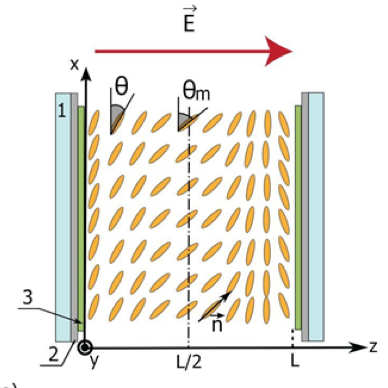Théorèmes de fluctuation et bruit thermique
 Critical Phase Transition
Critical Phase Transition
Sergio Ciliberto, Ludovic Bellon, Artyom Petrosyan, Audrey Steinberger, Caroline Crauste
We study thermal fluctuations around critical phase transitions in different systems including liquid crystals, binary mixtures of polymers and solvents or water and micelles. We are interested in the statistics of the fluctuations at equilibrium but also out of equilibrium, particularly when these systems are spatially confined over length scales of the order of the correlation length. We use different technics such as force measurements, optical tweezers, light scattering or dielectric spectroscopy. This work is founded by the ERC OUTEFLUCOP
 Molecular dynamics and plasticity on glassy polymers under stretching
Molecular dynamics and plasticity on glassy polymers under stretching
Sergio Ciliberto, Caroline Crauste
This work is done in collaboration with Solvay and the LPMA. We study how glassy polymers plastify under uniaxial stretching following the microscopic dynamics of the polymer chains. Understanding the relation between the nature of the dynamics and the molecular interactions of the polymers is an important issue for improving the mechanical properties of new tailored industrial polymer materials.
 Stochastic thermodynamics and information limit
Stochastic thermodynamics and information limit
Sergio Ciliberto, Antoine Naert, Artyom Petrosyan
We use optical tweezers, harmonic oscillators and electric circuits to study the energy flows in out of equilibrium systems, which are either driven by external forces and temperature gradients or slowly relaxing towards equilibrium such as gels after a temperature quench. Among applications we we have studied the minimum energy necessary to erase an information bit.
 Fluctuation theorems in turbulence, granular gases
Fluctuation theorems in turbulence, granular gases
Antoine Naert, Jean-Christophe Géminard, Jean-Paul Zaygel, Sébastien Aumaître
We investigate dissipative systems such as granular gases, hydrodynamic turbulence, or wave turbulence, from the point of view of non-equilibrium statistical mechanics. These 'states', stationary or not, can be characterized by an effective temperature Teff. We measure this quantity consistently with different methods, heuristically based on the Fluctuation Theorem or Fluctuation-Dissipation Theorem. This temperature is nicely proportional to a mean kinetic energy in the system. We also investigate energy transport properties between separate such systems prepared at different Teff. These macroscopic experiment allow to investigate fundamental questions that appears usually at micro- or nano-scales, such as finite-size effects, etc.
 nanomechanics: thermal fluctuations as a tool
nanomechanics: thermal fluctuations as a tool
Ludovic Bellon, Audrey Steinberger
We use a home made atomic force microscope (AFM) as a tool to investigate the mechanical behavior of micro and nano-systems such as AFM cantilevers or carbon nanotubes in contact with a substrate. The thermal noise in these systems, far from being a limitation to the precision of the measurement, allows us to extract physical data on the elastic properties (Young's modulus or shear modulus), damping mechanisms, or on the dynamics of interactions at nanoscale.
 Liquid interfaces and thin layers
Liquid interfaces and thin layers
We are investigating the mechanical properties of liquid interfaces and thin layers using a cylindrical probe AFM technique. The addressed topics are twofold: the liquid meniscus and contact line dynamics from nanoscale to microscale on the one hand, and the local rheological properties of boundary layers on the other hand.




